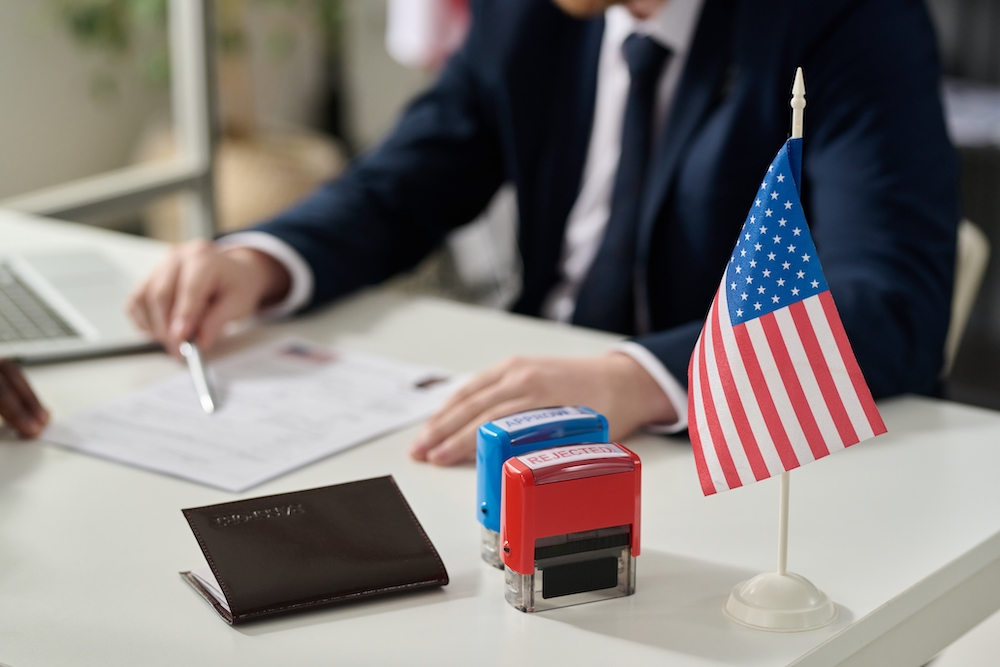This complete guide will tell you exactly how to get a marriage green card. Getting married to a US citizen or permanent resident can help foreign nationals obtain a green card. This green card allows them to live in the United States permanently.
The process to become a citizen may be long and complicated. However, with the right help, you can achieve this important step.
How to Get a Green Card in USA Through Marriage
This guide will assist you with each important step. It covers getting married, the process of applying for a green card, and preparing for the interview. This ensures that you are fully prepared to navigate this process. It also makes sure you are ready to take the steps in becoming an official Lawful Permanent Resident.

Make Sure to Legally Recognize Your Marriage
Becoming a citizen or lawful permanent resident typically starts with the validity of your marriage. Ensure the US legally recognizes your marriage to a U.S. citizen before you start the green card application process. This involves proving that your marriage is valid, bona fide, and not entered into to evade immigration laws. Having documentation like a marriage certificate, joint financial accounts, shared property, or children together can prove your relationship.
After confirming your marriage is valid, the next step is choosing the right immigration status for your spouse. Immediate relatives of U.S. citizens and spouses have distinct paths for LPRs. Family members of U.S. citizens can get visas immediately. However, permanent resident spouse’s must wait for a visa to become available.
The I-130 Petition
The spouse who is sponsoring must file Form I-130 (Petition for Alien Relative) with USCIS. You must submit several required supporting documents along with this petition:
- A copy of the petitioner’s birth certificate or passport to establish citizenship status
- A copy of the foreign spouse’s birth certificate
- A copy of the marriage certificate
- Proof of the termination of any previous marriages for either spouse, such as a divorce decree or death certificate
- A passport-style photograph of both spouses
- A filing fee
After you send the I-130 petition and all required documents to USCIS, they will review it. If everything is correct, they will approve the petition. For spouses of LPRs, the waiting period begins as they wait for a visa number to become available.
Waiting for a Visa Number (Spouses of LPRs)
Spouses of green card holders must wait for a visa number to become available. The U.S. Department of State and the National Visa Center set yearly limits determining availability. Applicants must inform USCIS of any changes, like moving or status updates, while waiting for a decision.
While you wait, make sure you have permission to stay in the U.S. legally, either with a visa or another way. Once a visa number becomes available, the adjustment of status process can begin.
Adjusting Status or Going through Consular Processing
Adjusting Status
Consular Processing
After finishing the adjustment of status or consular processing and getting all approvals, you’ll receive your green card. This card indicates that you are a lawful permanent resident.
The Conditional Green Card (CR-1 or IR-1 Visa Holders)
When approving their green card, immigration grants spouses married for less than two years a “conditional” green card, which remains valid for two years. To keep your green card, file a joint petition (Form I-751 or I-829) before it expires. This demonstrates the genuineness and enduring nature of your marriage. They may require additional supporting documentation.
Preparing for the Green Card Interview
The final stage before acquiring your green card is the interview. This step is crucial for the USCIS officer to verify the information in your application. It also helps them determine the validity of your marriage.
Answer truthfully and confidently, providing clear and consistent responses. To prepare:
- Review and thoroughly understand the details of your application.
- Collect any additional documents requested by USCIS.
- Practice being responsive and concise with your answers.
- If you or your spouse isn’t fluent in English, consider seeking the assistance of an interpreter.
- Prepare to answer personal questions about your relationship and living arrangements.
Prepare and be honest for your green card interview to improve your chances of success.
Ensuring Full Compliance and Understanding Your Rights
Throughout the entire process, it’s crucial to understand and comply with all immigration laws and requirements. Failing to meet these obligations can jeopardize your permanent resident status. Know your immigrant rights and seek help from an immigration lawyer if you face problems or need guidance.
Gaining permanent resident status through marriage is a significant milestone for many immigrants. By completing the process, you can enjoy the freedom and security of having a green card in the United States.
If you have questions about your immigration status, book a consultation with our experienced immigration attorney for personalized assistance. We are here to assist you at every stage of the process.



